Even if you never visited Morocco, chances are you might have seen the peculiar photos of the goats on trees. A tree full of goats is a striking sight. It looks almost unnatural, as if someone placed the goats there for a photo shoot.
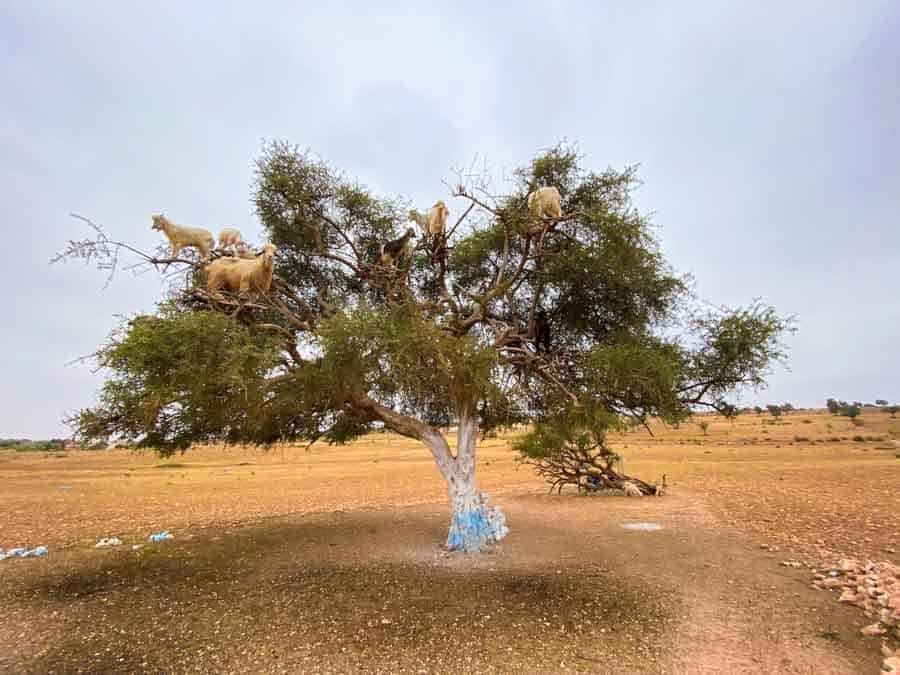
As incredible as this may sound, the goats actually climb these trees on their own. And they even seem to have a good time up there. But you should know that these are not just any trees. These are the much sought-after Argania Spinosa, known as Argan. The tree is native to the calcareous semidesert Sous Valley, in the southwest part of Morocco.
Table of Contents
Why Do Goats Climb on Trees in Morocco?
The simple answer is: for food. Since the dry climate of Morocco doesn’t allow for much vegetation to grow on the ground, the goats are happy to find their food on trees.
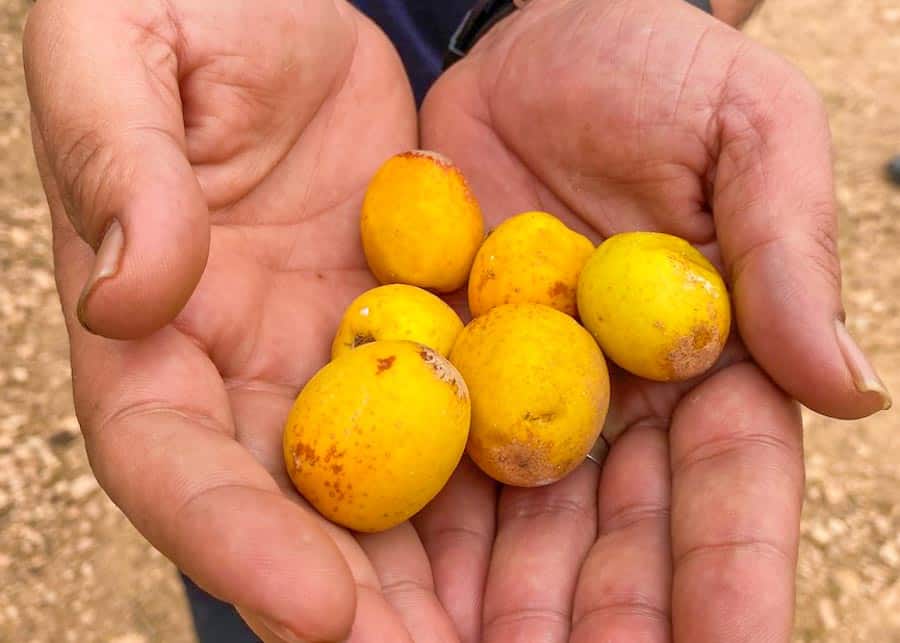
They like to eat the Argan fruit which has a thick, pulpy flesh. So they climb the trees instinctively, attracted to the sweet smell.
Watch these bizarre goats in action here:
How Do Goats Climb on Trees?
Goats are quick and agile creatures. They have been known to climb not only trees, but also mountains and steep rocks. They help themselves with their hoofs which have two toes that can spread out to create a more secure grip. Also, higher up their legs there are two claws, called dewclaws, which they use to cling to steep rocks or tree branches.
These goats can easily climb to the top of the 10-meter tall trees that grow in this part of Morocco. They go up steep angles, jump from branches, and are quick to find spots where food grows. Sometimes they also climb up trees to escape predators.
Tree Climbing Goats and the Making of Moroccan Argan Oil
Of all the curious stories I’ve learned in Morocco, this is by far the most intriguing one. After eating the Argan fruits the goats defecate the seeds, which are later used to make the precious Argan oil. As the seeds pass through the goat’s intestine, they become softer and easier to open. Sometimes the goats also spit out the seeds when eating the fruits.
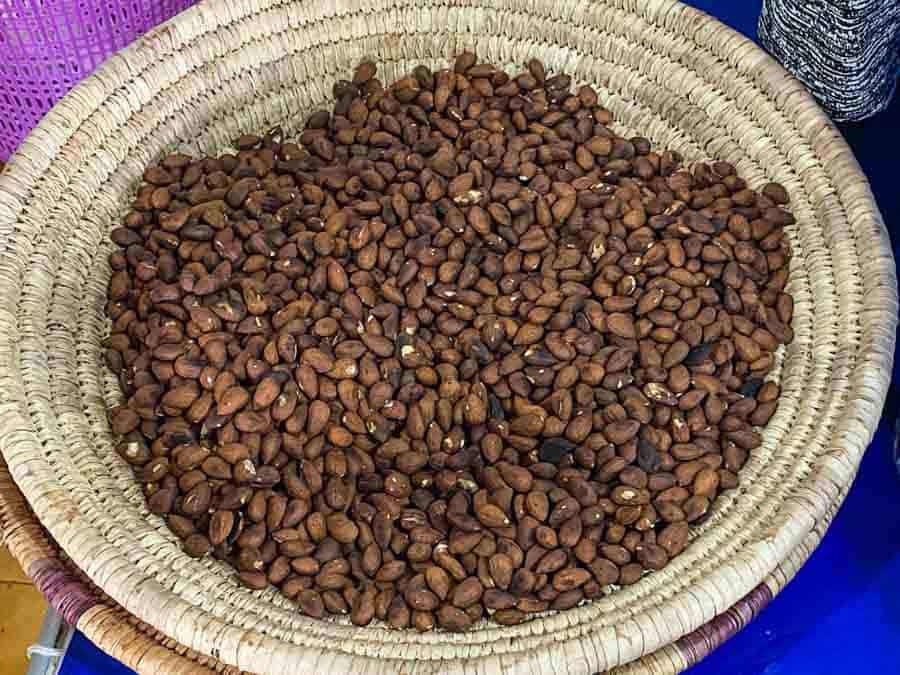
Of course, people may also harvest the fruits themselves, but the goats save them a step. So no wonder that goat herders support and encourage this bizarre agricultural technique. They lead their herds through the Argan forests, where the goats can climb up and feed themselves from the trees. But they let the animals loose only after the fruit is ripe and fully mature.
According to the Agronomic and Veterinary Institute in Rabat, Argan nuts eliminated by goats represent almost 60 per cent of the nuts used in making Argan oil. The rest are harvested by women who gather the fruit straight from the trees and grind the seeds inside of the nuts to produce the oil.
How Is the Argan Oil Made?
Argan oil is among the most expensive in the world. In Morocco this oil is traditionally used either as a savory dip for bread, or in cosmetic products.
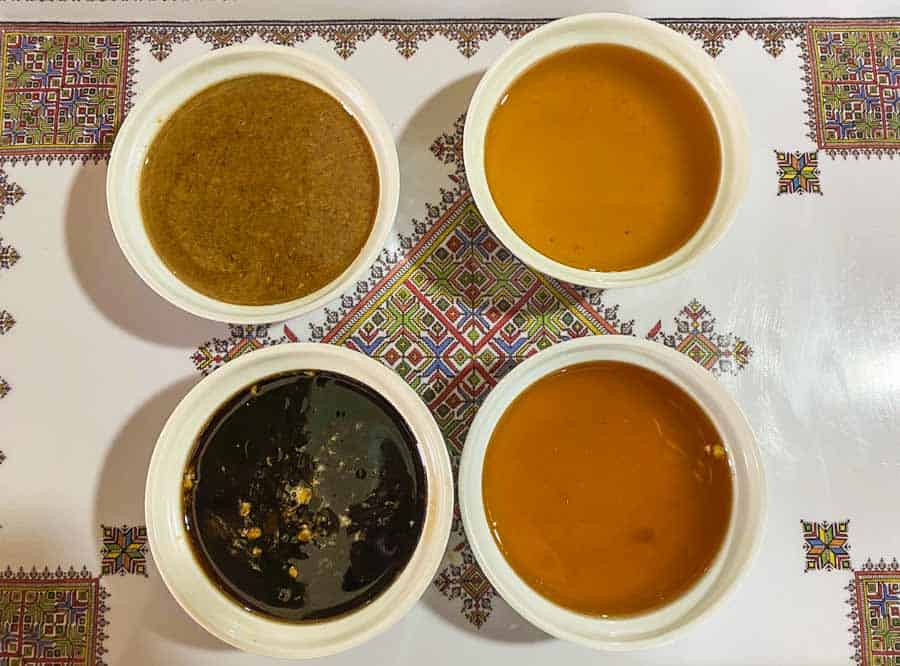
If you buy it locally, it costs around $30-50 a liter. However, on the international markets you’ll pay way more than that for even a small bottle.
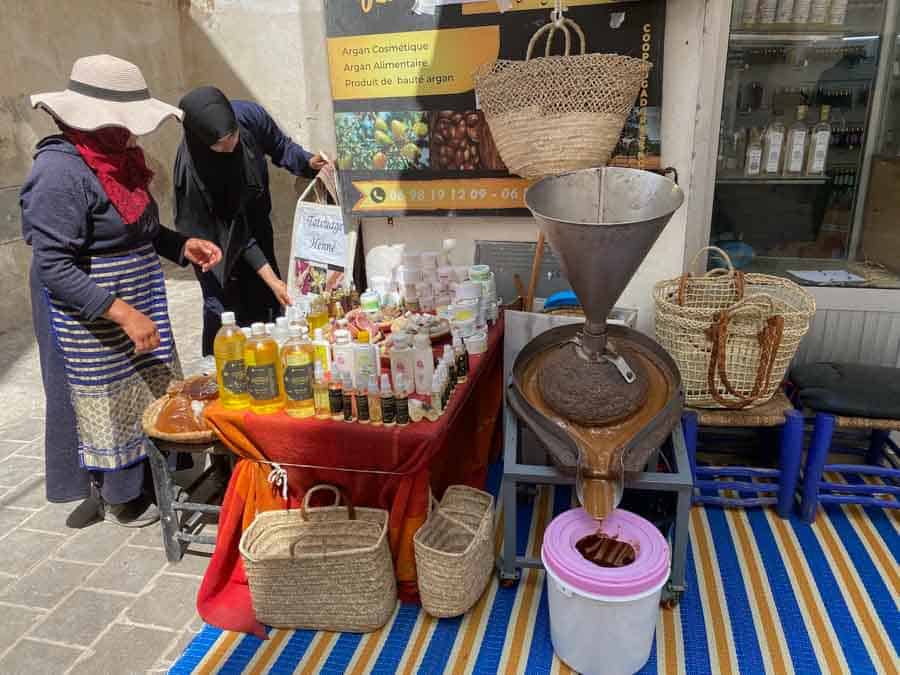
Most Argan oil is produced by local cooperatives of Berber women around the cities of Agadir and Essaouira, where the Argan tree is common. The process is very laborious as it’s mainly done by hand. The Argan fruit is first dried in the sun, peeled, then the seed is crushed with stones.
We were able to observe the process on our day trip from Marrakech to Essaouira, when our driver took us to a women’s cooperative. The cooperatives hire mostly widows and destitute women, offering them a salary, free childcare and health insurance. The women work very hard to remove the shell of the kernels by pounding them with a stone. It takes up to three days of grinding for every woman to get one liter of Argan oil!
The Sad Role of Tourism
Another reason you’ll see so many goats on trees in Morocco is because of tourism. When the goat herders discovered the visitors’ interest for their animals’ unusual behavior, they decided to exploit the situation.
As a result, many herders started luring their goats up on trees to earn tips from tourists. At the same time, the tour companies and travel guides began bringing big groups of tourists to see Morocco’s eccentric “goat trees”. So now, when people pull over to take pictures of the animals or pose with them, they are asked to tip the herder before they are allowed to do it.
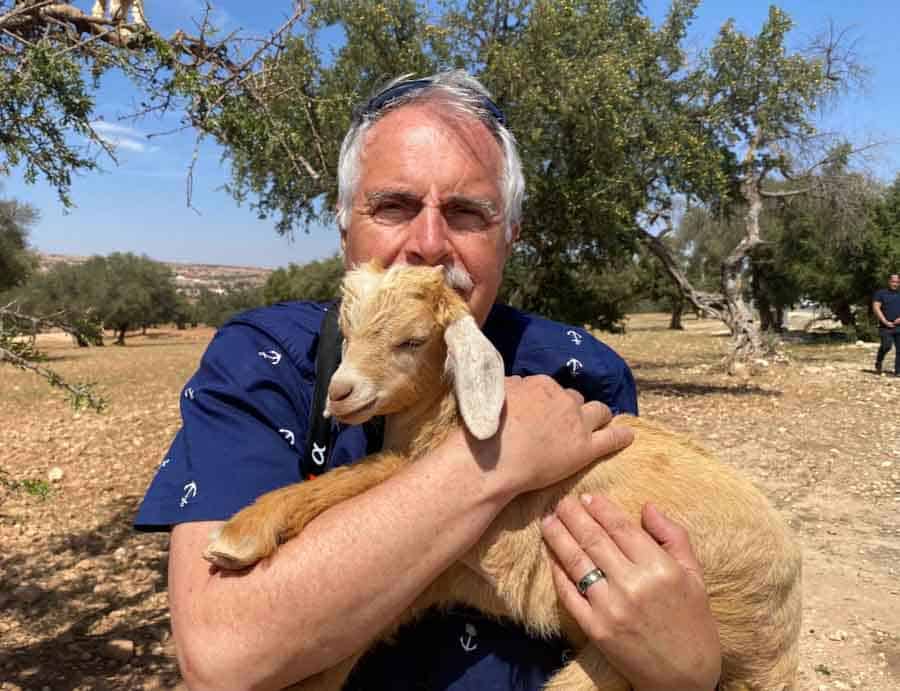
Unfortunately, the animals are now abused. To keep the goats from jumping down, the herders tie them to the tree branches for hours, until the tourists stop coming. In summer, when temperatures can soar to the hundreds, the goats get very tired and dehydrated.
Animal rights activists started a serious campaign against this procedure, but the herders argue that it’s their only way to make a living and feed these animals. Especially during these last years of drought in Morocco.
Where to See Goats on Trees in Morocco
If you want to see the tree climbing goats, you’ll have to travel to the Souss-Massa-Draa region, in the southwestern part of Morocco. Most visitors pass through this area on their way to Essaouira or Agadir, which are beautiful destinations for any Morocco itinerary.
You will see goats adorning trees along the roughly hundred-mile road from Marrakech to Essaouira. However, these goats are most likely ‘planted‘ there by goat herders trying to make a buck.

If you want to see authentic goats that climb trees of their own free will, I encourage you to scout the area with a good local guide who can take you farther away from the main road. After all, the reason we think tree goats are so cute is precisely because they do it naturally.
But if you don’t have time to drive around and you are absolutely determined see the goats, the ones on the side of the road may be a good option for you.
The best time to see goats climbing on trees in Morocco is in late spring, early summer (May – June), when Argan fruits are ripe.
FAQ
• Are goats in trees fake?
No, they are not. Goats climb naturally on trees to find food when they can’t find it on the ground.
• Where else other than Morocco can you find goats on trees?
This natural phenomenon is unique to North Africa. The goats are attracted to the Argan fruit which grows mainly in southwestern part of Morocco and western Algeria
• Do climbing goats ever fall from trees?
When goats climb trees freely, without being coaxed, it’s very unlikely that many will knock each other off the trees. However, when the herders force them up the trees and tie them down, they sometimes stumble and fall breaking their legs.
• How high can goats climb?
The goats in Morocco can climb as high as 10-meter (32-feet) trees.
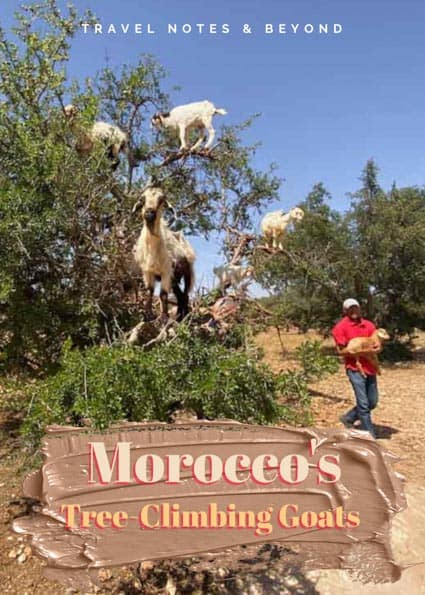

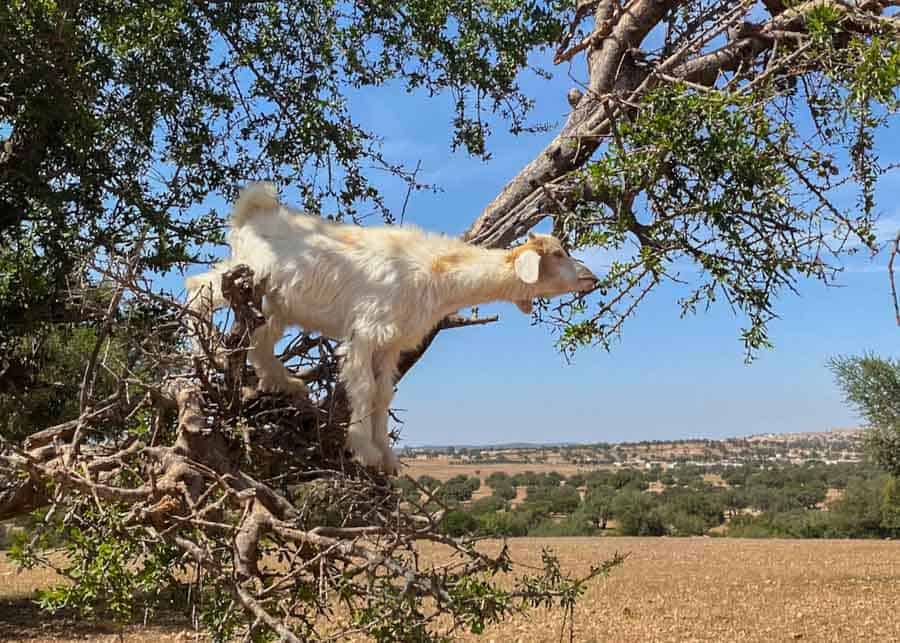
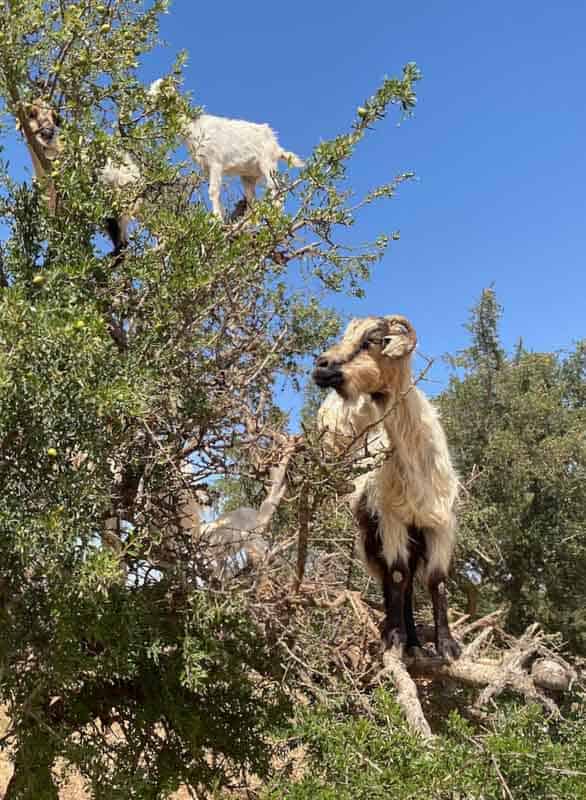
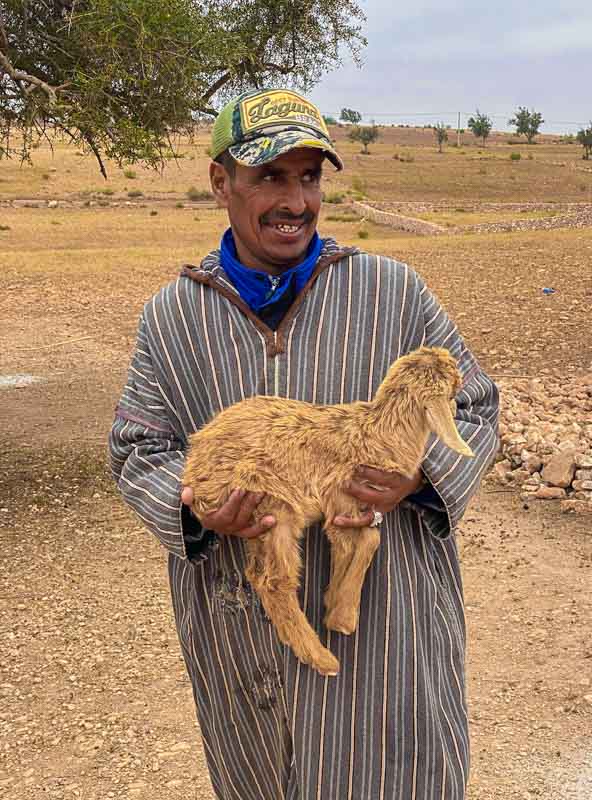
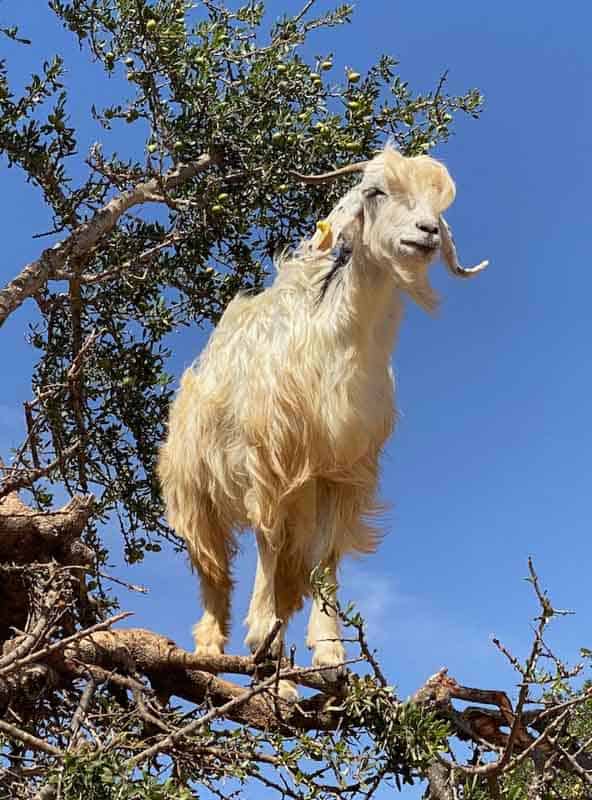
 Morocco Itinerary – How to Spend 10 Days in Morocco
Morocco Itinerary – How to Spend 10 Days in Morocco


